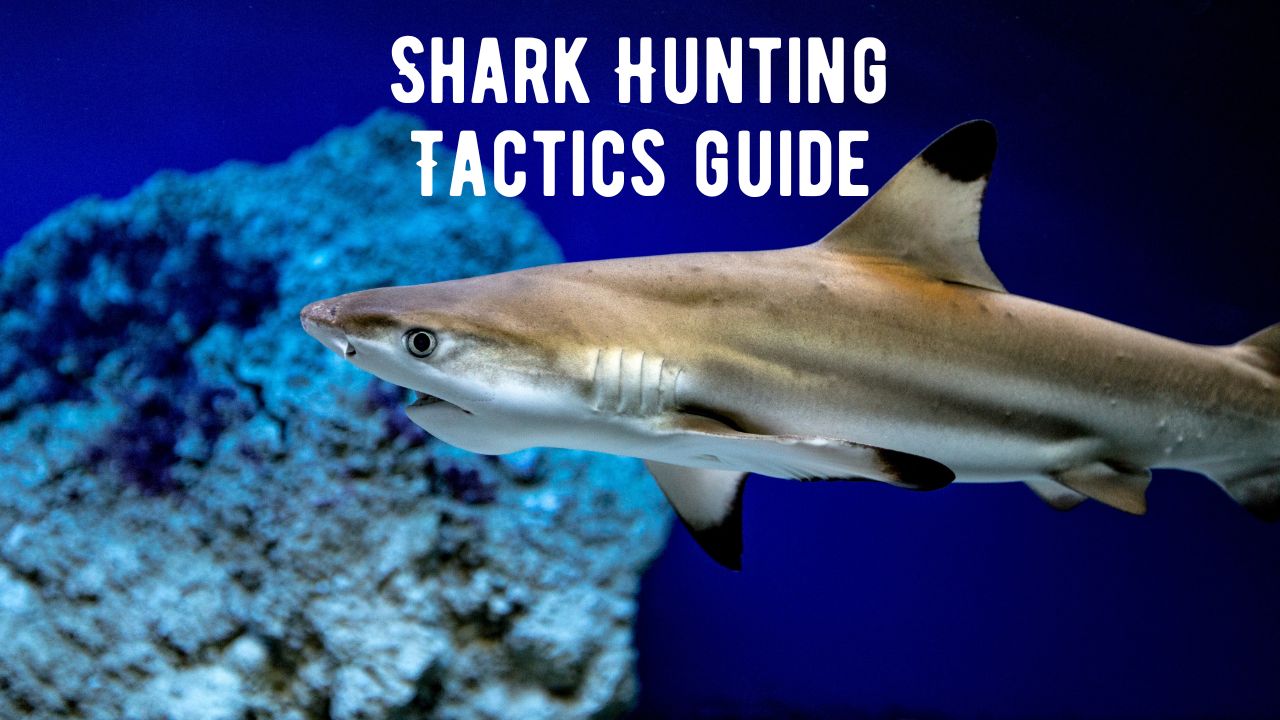
Sharks are masterful predators, well-adapted to their environments with a diverse range of hunting tactics. This comprehensive guide explores the various strategies sharks employ in their pursuit of prey, highlighting their remarkable adaptations and behaviors.
Ambush Predation:
1. Stalking from the Depths:
- Description: Many shark species, including the great white shark, utilize the element of surprise by lurking in deeper waters. They approach their prey stealthily, often from below, minimizing the chance of detection.
2. Ambushing at the Surface:
- Description: Some sharks, like the hammerhead shark, employ a unique hunting strategy by patrolling the surface. Their broad, T-shaped heads provide an enhanced field of vision, allowing them to locate prey near the water’s surface.
Pursuit Predation:
1. High-Speed Chases:
- Description: Speed is a key weapon in the shark’s hunting arsenal. Species such as the mako shark are renowned for their exceptional swimming speed, enabling them to chase down swift prey like tuna and swordfish.
2. Bursts of Acceleration:
- Description: Short bursts of high acceleration characterize the hunting style of some sharks, like the bull shark. This tactic is effective in catching prey in short, rapid sprints.
Group Hunting:
1. Coordinated Ambush:
- Description: Some shark species, including reef sharks, engage in coordinated group hunting. They surround schools of fish, using teamwork to corral and isolate prey before launching a collective attack.
2. Feeding Frenzies:
- Description: During feeding frenzies, sharks are drawn to an abundant food source. The scent of blood or the distress signals of prey can trigger a frenzied, competitive feeding event where multiple sharks aggressively consume the available prey.
Camouflage and Stealth:
1. Cryptic Coloration:
- Description: Certain shark species, like the wobbegong shark, have developed cryptic coloration and patterns that help them blend seamlessly into their surroundings on the ocean floor. This camouflage allows them to surprise unsuspecting prey.
2. Ambush Predation Using Camouflage:
- Description: Sharks with camouflage capabilities use their appearance to lie in wait among rocks or coral, making them virtually invisible to passing prey. The nurse shark is known for employing this tactic.
Electrosensory Hunting:
1. Electroreception:
- Description: Sharks possess specialized electroreceptor organs called the ampullae of Lorenzini. These organs detect the electrical fields generated by the muscle contractions and nerve impulses of prey, allowing sharks to locate hidden or buried prey.
2. Pinpointing Prey in Low Visibility:
- Description: Sharks, such as the lemon shark, use their electroreceptive abilities to hunt effectively in low-visibility conditions. This is particularly advantageous in murky waters or during the night.
Biting and Testing:
1. Test Biting:
- Description: Some sharks engage in test biting to assess the edibility of potential prey. This behavior is often observed in shark-human interactions, where the shark may initially bite to investigate an unfamiliar object.
2. Precision Biting:
- Description: Sharks exhibit remarkable precision in biting, as seen in species like the tiger shark. Their teeth are adapted for cutting through a variety of prey, from tough-skinned marine mammals to softer fish.
Feeding on Carrion:
1. Scavenging Opportunism:
- Description: Many sharks are opportunistic scavengers, feeding on carrion or the remains of deceased marine animals. This scavenging behavior helps them make use of available resources and minimize energy expenditure.
Benthic Hunting:
1. Foraging on the Ocean Floor:
- Description: Benthic sharks, such as the angel shark, have adapted to life on the ocean floor. They use their flattened bodies to lie in wait, capturing unsuspecting prey that ventures too close.
Filtration Feeding:
1. Filter-Feeding Mechanisms:
- Description: While not common among sharks, some, like the whale shark and the basking shark, are filter feeders. They swim with their mouths open, filtering plankton and small fish through specialized gill structures.
Tail-Slapping:
1. Disorienting Prey:
- Description: Thresher sharks use their long tails to slap the water’s surface, creating shockwaves that disorient and stun schools of fish. This provides an opportunity for the shark to capture the confused prey.
Conclusion:
Sharks have evolved a diverse set of hunting tactics, demonstrating their adaptability and efficiency as apex predators. From ambush predation to group hunting and specialized sensory abilities, each species has honed its skills to thrive in specific environments. Understanding these strategies is crucial for appreciating the role sharks play in marine ecosystems and promoting conservation efforts to ensure their continued survival.
I. General Shark Hunting FAQs:
1. How Do Sharks Hunt?
- Answer: Sharks use a variety of hunting tactics, including ambush predation, pursuit predation, group hunting, camouflage, electrosensory hunting, biting and testing, feeding on carrion, benthic hunting, filtration feeding, and tail-slapping.
2. Do All Sharks Hunt in the Same Way?
- Answer: No, different shark species employ various hunting strategies based on their anatomy, environment, and prey preferences. Some are ambush predators, while others are high-speed pursuit hunters.
3. What Is Ambush Predation in Sharks?
- Answer: Ambush predation involves sharks lying in wait for prey, often using the element of surprise. They may stalk from the depths or ambush at the surface to catch unsuspecting prey.
4. How Do Sharks Use Group Hunting?
- Answer: Some shark species engage in coordinated group hunting, surrounding schools of fish to corral and isolate prey before launching a collective attack. Feeding frenzies are a notable example.
5. What Is Tail-Slapping in Shark Hunting?
- Answer: Tail-slapping is a hunting tactic used by thresher sharks. They use their long tails to slap the water’s surface, creating shockwaves to disorient and stun schools of fish, making them easier to catch.
II. Shark Hunting Adaptations FAQs:
1. How Do Sharks Use Electroreception in Hunting?
- Answer: Sharks use specialized electroreceptor organs called the ampullae of Lorenzini to detect the electrical fields generated by the muscle contractions and nerve impulses of prey, aiding in locating hidden or buried prey.
2. Why Do Some Sharks Have Camouflage?
- Answer: Sharks like the wobbegong have developed cryptic coloration and patterns for camouflage. This allows them to blend into their surroundings on the ocean floor, providing a strategic advantage in ambushing prey.
3. What Is Test Biting in Shark Hunting?
- Answer: Test biting is a behavior observed in some sharks, where they may bite to assess the edibility of an unfamiliar object or prey. It is a way for sharks to investigate their surroundings.
4. How Do Sharks Use Tail-Slaps for Hunting?
- Answer: Thresher sharks use their long tails to create shockwaves by slapping the water’s surface. This disorients and stuns schools of fish, making it easier for the shark to capture prey in the confusion.
5. Why Are Some Sharks Filter Feeders?
- Answer: Sharks like the whale shark and the basking shark are filter feeders. They swim with their mouths open, filtering plankton and small fish through specialized gill structures, allowing them to feed efficiently.
III. Safety FAQs Related to Shark Hunting:
1. Are All Sharks Dangerous to Humans During Hunting?
- Answer: While sharks are predators, most species are not inherently dangerous to humans. Shark attacks on humans are rare, and many sharks pose no threat.
2. How Can Humans Avoid Shark Attacks During Hunting?
- Answer: Humans can reduce the risk of shark encounters by avoiding areas with known shark activity, refraining from wearing shiny jewelry, and following guidelines for responsible behavior in the water.
3. Do Sharks Hunt Humans for Food?
- Answer: Shark attacks on humans are typically cases of mistaken identity. Sharks do not target humans as a primary food source, and most incidents involve investigative behavior rather than predation.
4. Can Shark Hunting Be Dangerous for Divers?
- Answer: While shark hunting for certain species can be dangerous for divers, most sharks are not interested in hunting humans. Divers should follow safety guidelines and respect the animals’ natural behaviors.
5. Are There Safe Ways to Observe Shark Hunting?
- Answer: Yes, responsible shark tourism, such as cage diving, provides a way for humans to observe shark hunting behaviors safely. It allows for an appreciation of these predators in their natural habitat without direct interaction.
IV. Conservation FAQs:
1. Do Humans Threaten Shark Hunting Habitats?
- Answer: Human activities, including overfishing, habitat destruction, and climate change, pose significant threats to shark habitats and can impact their ability to hunt successfully.
2. How Can Conservation Efforts Protect Shark Hunting Grounds?
- Answer: Conservation initiatives focus on protecting marine environments, implementing sustainable fishing practices, and raising awareness about the importance of sharks in maintaining ecosystem balance.
3. Are There Laws Protecting Sharks from Overhunting?
- Answer: Many countries have implemented laws and regulations to protect sharks from overhunting. International agreements and organizations work towards global conservation efforts to ensure sustainable shark populations.
4. Why Is Preserving Shark Populations Essential for Ecosystems?
- Answer: Sharks play a crucial role in maintaining marine ecosystem balance by controlling prey populations. Their conservation is vital for the health of oceans and the sustainability of various marine species.
5. How Can Individuals Contribute to Shark Conservation?
- Answer: Individuals can contribute to shark conservation by supporting organizations dedicated to marine protection, choosing sustainably sourced seafood, and raising awareness about the importance of sharks in the ecosystem.






